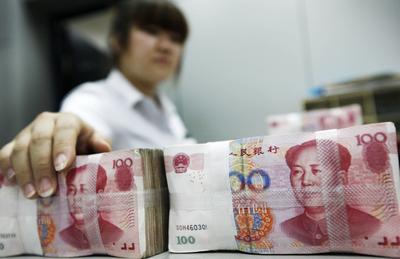In one sense, at least, Asian economies are already winning from Chinese growth: slack global demand has meant that China increasingly powers the growth of nearly every major economy in Asia.
But the question increasingly matters in another sense, as well: Chinese leaders are committed to rebalancing at least some elements of their country’s economy. And while that, in time, will mean a more competitive and powerful China, it will also create new opportunities for those countries in Asia that get manufacturing and investment policies right.
Why the change? China is approaching the upper limit of its existing growth model. It has emerged from the global crisis earlier and stronger than nearly any other major economy. But China’s leaders are hardly complacent about their country’s future economic path. To the contrary, despite remarkable successes, Premier Wen Jiabao has repeatedly called the current model, which relies disproportionately on exports and fixed asset investment, ‘unbalanced, unstable, uncoordinated, and unsustainable’.
China produces much but consumes little. The creation and perpetuation of its production-intensive economic model owes much to inefficient capital allocation. Few Chinese are reaping the windfalls of China’s growth, and those that are benefiting do so at the expense of the many. Vast regional disparities mean wide gaps in living standards and quality of life. And China’s investment-intensive growth model has exacted heavy environmental and energy costs.
The Chinese Communist Party relies heavily on economic success to assure political legitimacy. And it is now increasingly clear that the major pillars of the existing model are flawed: the global economic crisis provided stark evidence that China’s export-driven economy is vulnerable to dips in demand in the rest of the world. At the same time, China’s industrial and financial policies have introduced distortions and inefficiencies into its economy.
For these reasons, China’s growth model is almost certain to change in coming years as Beijing works to establish a more rational balance between production and consumption and tempers its longstanding preoccupation with GDP growth in favour of a greater emphasis on human capital-oriented growth.
That, in turn, will yield important changes to China’s political economy. The country will become more urban. Capital allocation could begin to shift from corporations to more households. Interior China will become more developed. And Chinese industry will move rapidly up the value chain.
Indeed, Beijing has long been determined to develop higher-value-added and technology-intensive industry, and its huge capacity to mobilise domestic capital gives it the power to do so. That means more competition for multinationals, including in third-country markets as Chinese firms produce substitutable (but cheaper) products. But it will also give others opportunities to fill a vacuum.
Take labour-intensive manufacturing in coastal China. Export-oriented manufacturers are already reassessing traditional production strategies as labour costs rise. There are stronger incentives to relocate production to interior China. And new options are emerging as some choose to leave China entirely rather than relocate inland.
For example, rising costs in China could make Indonesia a more attractive hub for some production. This would help drive Indonesian growth in the near term and ultimately wean its economy off its traditional reliance on natural resource exports. As Chinese demand levels grow, Indonesian manufacturers will also benefit by producing and selling their products in China.
Likewise in Vietnam, Thailand and even smaller economies like Cambodia. Cost advantages will attract new investments to Vietnam. Regional advantage and stronger intellectual property protection will make Thailand more attractive, provided political risk can be held in check.
For India, rising incomes and higher-value-added production in China could bring benefits too. Real appreciation of the renminbi, alongside growing Chinese demand, would help India narrow its trade deficit with China over the next five years. The deficit has been of growing concern to the Reserve Bank of India and the commerce ministry. And with the growth of manufacturing, not least in southern states such as Tamil Nadu, India could also capitalise in some areas of production as China moves up the value chain.
The National Manufacturing Policy could yield new manufacturing zones with industrial parks, warehousing and opportunities in special economic zones. And as the Indian government works to increase the share of manufacturing in GDP from around 16 per cent to 25 per cent in a decade, India need not compete only at the bottom of the value chain. It could aim to compete, too, in machinery, auto parts and even automobiles, particularly through the adoption of new policies at the state level.
But huge obstacles remain. Some in India view this as a backdoor to relaxing labor laws. And such policies could falter, too, on land acquisition.
That would be a shame. Investors are aggressively seeking new opportunities in Asia. So government policies — including new investments in infrastructure, fiscal incentives and tax breaks, and improvements to supply and distribution networks — will shift Asia’s industrial landscape.
Who will be the winners? Who will surge ahead? Policy choices over the next 3–5 years will play a central role in determining the answers.
Evan Feigenbaum is head of the Asia practice group at Eurasia Group and also Adjunct Senior Fellow for Asia at the Council on Foreign Relations.
This piece was originally published here by the Business Standard.


Evan, you said that the gap between China’s haves and havenots is far and widespread. I fully agree with the point. But I am confused about something. Why is there this daily western obsession with the gap between China’s haves and havenots, but no compareable focus on the gap between India’s haves and havenots. I just spent sometime in India and China recently. According to my observations, the gap between India’s haves and havenots is much more dire and more pronounced than that of China. Is there a reason as to why there is so much focus on China and not India on the issue of haves and havenots.